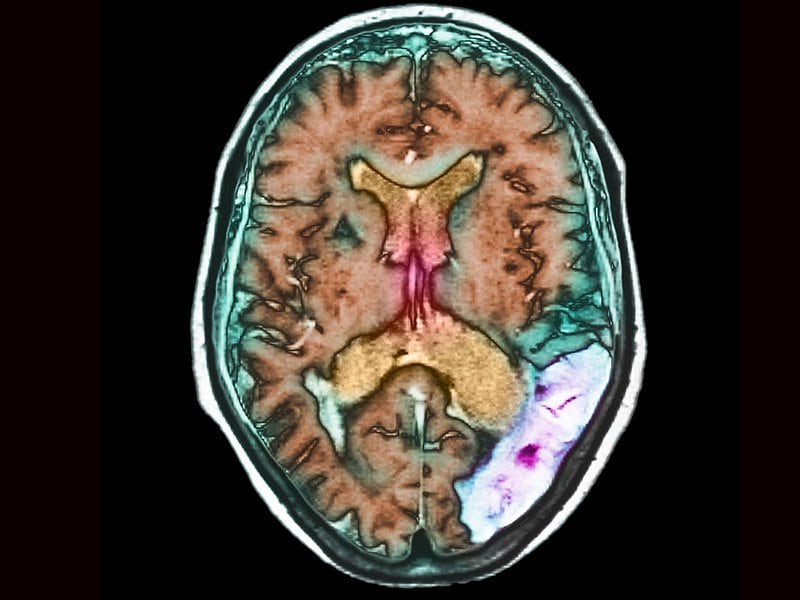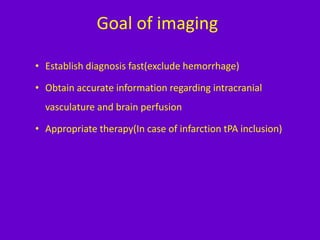Which of the Following Is Accurate Regarding a Hemorrhagic Stroke
B One of the main presenting symptoms is numbness or weakness of the face. In a subarachnoid hemorrhage bleeding occurs.

Intracerebral Hemorrhage Outcome A Comprehensive Update Journal Of The Neurological Sciences
It is often caused by a microinfarct.

. 1 Ischemia leaves the cerebral vasculature friable resulting in the highest rate of HT in the days immediately following infarction. Hemorrhagic transformation HT increases morbidity and mortality of acute ischemic stroke. It accounts for 50 of all CVAs.
Epidemiologic studies indicate that only 8-18 of strokes are hemorrhagic. A hemorrhagic stroke may begin suddenly develop quickly and cause the death of brain tissue within minutes or hours. An embolus blocking a blood vessel.
Hemorrhagic strokes are comparatively less commonly seen and usually account for around 15 cases of. Hemorrhagic stroke is caused by a rupture in a weakened blood vessel in the brain. Following a hemorrhagic stroke long-term disability or a person not surviving the stroke are a serious risk.
Which of the following is accurate regarding a hemorrhagic stroke. Brain computed tomography can usually detect most cases of hemorrhagic stroke. A Functional recovery usually plateaus at 6 months.
A It is caused by a large-artery thrombosis. A medical professional will be able to give guidance and support regarding a persons long-term prognosis but it is often hard to predict the outcome accurately and in the end people may fare worse or much better than previously estimated. B One of the main presenting symptoms is numbness or weakness of the face.
A hemorrhagic stroke is a condition that happens when a blood vessel in the brain bursts. Stroke which occurs due to stopping of blood supply to the brain is often due to clot formation or bleeding in or around the brain. Clot formation in the arteries of brain occurs in ischemic stroke while bleeding in or around the brain occurs in hemorrhagic stroke.
There are different types of hemorrhagic stroke. Aneurysms and arteriovenous malformations AVMs. Which of the following is a TRUE statement regarding hemorrhagic stroke.
Two types of weakened blood vessels usually cause hemorrhagic stroke. If the bleed is caused by a ruptured aneurysm swelling of the vessel that breaks a metal clip may be placed surgically at the base of the aneurysm to secure it. Which of the following is accurate regarding a hemorrhagic stroke.
Discriminating between eclampsia and stroke during labor is difficult. The primary treatment for people with hemorrhagic stroke involves supportive care and optimiz. Hemorrhagic stroke is rarer than an ischemic.
Hemorrhagic strokes are less common with only 15 percent of strokes being hemorrhagic. Rapid and accurate diagnosis using neuroimaging 3. Anatomy and Physiology questions and answers.
The formation of a thrombus d. It is the most common cause of CVA. The estimated survival rate for hemorrhagic strokes is around 267.
C The risk of stroke increases with age. An intracerebral hemorrhage is the most common type. E Ischemic stroke will eventually produce a hemorrhagic stroke.
D Hemorrhagic strokes are associated with tumor compression of nerve tissue. Hemorrhagic stroke accounts for approximately 15 of strokes. 24 Anticoagulants both increase risk of HT 5 and worsen degree of bleeding.
Hemorrhagic stroke is less common than ischemic stroke ie stroke caused by thrombosis or embolism. B Ischemic strokes are related to excessive vasodilation of the brain blood vessels. Clinical documentation plays a vital role in all coding.
If you think about it that is basically 1 in every 4 people that have a hemorrhagic stroke. Seizures vomiting and headache are symptoms that make a hemorrhagic stroke more likely. 6 There are multiple scores that predict systemic hemorrhage.
A hemorrhagic stroke occurs when a weakened blood vessel ruptures. The most common cause of hemorrhagic stroke is hypertension. Control of elevated blood pressure Correction of coagulopathy.
For strokes caused by a bleed within the brain hemorrhagic stroke or by an abnormal tangle of blood vessels AVM surgical treatment may be done to stop the bleeding. However when facial or arm muscle weakness or a facial deficit is detected stroke should be strongly suspected. Blood leaks out and can irritate or injure the brain tissue or cause damage by pushing into nearby areas.
Hemorrhagic stroke. On the other hand there is a higher risk of death from hemorrhagic stroke with 40 percent of cases. A Hemorrhagic strokes are associated with bleeding within the heart.
Signs of worsening levels of consciousness neck stiffness or diastolic blood pressure 110 mm Hg and xanthochromia in cerebrospinal fluid make a hemorrhagic stroke more likely. Computed tomography CT or magnetic resonance imaging MRI with high sensitivity for intracerebral hemorrhage are essential in diagnosis. The two types of hemorrhagic strokes are intracerebral within the brain hemorrhage or subarachnoid hemorrhage.
A prior transient ischemic attack makes a hemorrhagic stroke less likely. An atherosclerotic plaque c. C Main presenting symptom is an exploding headache d It is caused by a large-artery thrombosis.
In this type bleeding occurs inside the brain. A weak and dilated blood vessel b. Which of the following is characteristic of a hemorrhagic stroke.
C Main presenting symptom is an exploding headache d Functional recovery usually plateaus at 6 months. Targeted assessment for potential early interventions. It is especially important however when reporting conditions such as stroke which more often than not involves multiple symptoms diagnoses and complications.
Concise clinical assessment regarding ICH characteristics and patient condition 4. Through the years The American Hospital Associations AHA Coding Clinic for ICD-9-CM has tackled a variety of stroke-related.

Fast Five Quiz Hemorrhagic Stroke

A Ischemic Stroke Shown As Dark Black Area B Hemorrhagic Download Scientific Diagram

No comments for "Which of the Following Is Accurate Regarding a Hemorrhagic Stroke"
Post a Comment